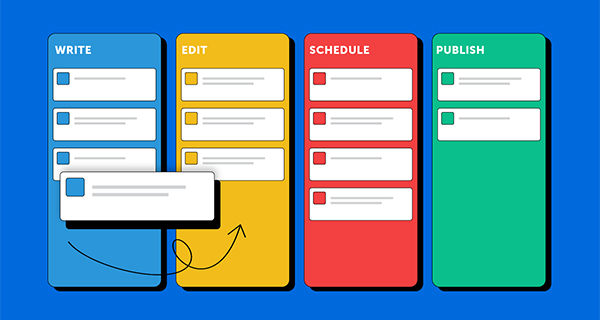In my opinion, if an equipment yields you money, do not cheap with it, and for a remote job, the better the workstation, the better your productivity.
The era of PCs has started again since home workstations do not require expensive laptops. Laptops are great with high-end features but for someone in a remote job, PCs can be the more stable option.
As a developer or designer, you need to keep in mind the features you need to support the
frameworks and software you will be working on. Designing frameworks and app developers comparatively need higher specifications than a content writer.
Payment gateways
Getting paid might be the last thing to happen but the important thing of being in a remote job. Especially if you are in a part-time remote job or even in a paid internship, you need to set up your payment gateways right so that you do not get into trouble getting paid.
Right after the interview, the recruiter would have told you about their mode of payment and when they pay you. It would be wise to get your profile for that gateway set up right away.
PayPal is the leading gateway for freelancers and
remote job workers all over the world. Apart from a transaction fee of $2.9 and an additional $0.30, you don’t lose a single penny.
Getting verified on PayPal is an essential step and it is quite simple as you stumble into problems getting your first payment. Go to the menu (in your phone) or the summary (in a desktop) and you can find an option to verify your account.
The process differs based on where you live but usually, PayPal will verify your identity and ask for a debit card and your bank account number. Once that is done, you are good to go.
Google Pay is another payment option in the Asian timezone. Depending upon the client’s location, getting paid through Google Pay is simple and fast.
Skrill is a famous option among the European countries yet they support Asian countries as well. If you are from India, you can get paid but it might not be possible if your sender (in this case, your client) is also from India as well.
Electronic Funds Transfer (EFT) and checks are good for local companies that support local banks that rarely charge any transaction fee.
Resource management
Deadlines are the most important aspect of a remote job. Period.
You have the freedom to work at your own pace and capitalize on the resources you have. Your recruiters will expect the best results from you. To provide them what they expect you need to manage resources.
Time, being the valuable resource of them all, is usually wasted unknowingly.
The best way to avoid wasting time working in a remote job is to stick to a schedule. Use calendar apps like Google Calendar to partition your big chunk of work to consumable segments. That way you won’t feel the remote job to be a burden.
Google Calendar, a free scheduling app
When you choose other tools for working, choose the free versions to test them out first. Buying a software or a subscription plan right away to aid your remote job is not a good idea. For instance, choose Evernote as it is a free time management app over apps that ask to pay from day one.
Always have that mental switch whenever you start to work. To be in that state, you need to turn off all distractions. I feel that putting your phone in the silent or airplane mode helps a lot. There are no notifications, no pop-ups and the only screen you focus on is your PC.
Step out once in a while for fresh air. You deserve it after all the day’s work. You might have chosen this remote job to spend time with your family and this might be the right time.
Autonomous
To stay productive, put your actions to work and talk less. This is what my mentor used to say.
Being autonomous, does not only mean that you should be your guide but also make sure you keep your employer sane and not become a burden.
Nobody likes if their remote employees ask one question for every single call. They will respond to your queries but the best remote job worker knows how to carry things themselves.
Try to get the maximum input in your conference calls and meetings. That way your workflow stays uninterrupted.
Before starting with any new project, here is a quick tip: keep the expectation higher. Overperformance is not a problem but underperformance will always be regarded as a flaw. Ask your employer what their expectations are and work to surpass them.
Not all days are bright and productive. You may feel gloomy and may not like working on that day. There’s no one around you to boost you up and motivate you to get the day’s work done in a remote job.
The primary trait that separates the average remote job workers from the top of the tier remote employee is their attitude towards the job and how they stay self-motivated and self-directive, not depending entirely on their employer for directions.
Keep improving
Learners never stop learning.
As an independent remote job worker, learning should be a key aspect of your career. No compromises in that. Your mentor or senior expects your output to improve after every project and people rarely like stagnant people.
Learning does not mean you need to pursue a masters but to equip yourself with skills that are relevant and do not go extinct.
Open source
YouTube is the ocean where you can swim for free. All you need is to spend some time searching and you can set up a complete stack for the skills you want to develop.
I am not a great fan of using social media for learning but Reddit communities help to interact with people and get insights from them in your domain.
E-learning platforms
Out of all the options on the internet, I would suggest Udemy to start with as there are free courses there that give you an outline of the skill you want.
To take that to the next level, you can choose
Coursera and
EdX that offer Massive Open Online Courses (MOOC). They follow a subscription or a lump sum amount to be paid or can be audited. Backed by the top universities in the world, you can expect great quality out of them.
College students, particularly find this to be a steal as most colleges and universities facilitate these courses for free. You can choose an
online remote part-time job and learn a course on these platforms at the same time. Why would one say no to that?
The advantage of being in a remote job is that the company you work for might release courses and online training that you might be able to take up for free. Why would you want to miss that out?
The reason why you need to stay on top of the stack is to survive and improve exponentially as there are always more people waiting to take over your role. Remote jobs are dynamic and the faster you improve, the more you get paid.

Coursera, global MOOC platform
Waw Asia - helping out every remote job worker in Asia
If you are new to the
remote job culture, I would highly recommend getting applied to a
remote job portal.
Why?
You never know when you might find a better recruiter who pays more, takes care more, and provides a great remote job experience.
Not just that. You can get great insights, articles to help you out in the course of your remote job career and assist you by clarifying your doubts and queries.
Waw Asia is the best in Asia where we bring in global recruiters to wonderful talents like you in our Asian timezone.
Starting your journey is simple. Just
sign up and directly apply to any employer. That is it. We bring
remote full-time jobs for the experienced and
part-time jobs for those who wish to start their first
remote job experience.
























